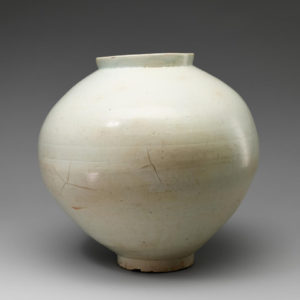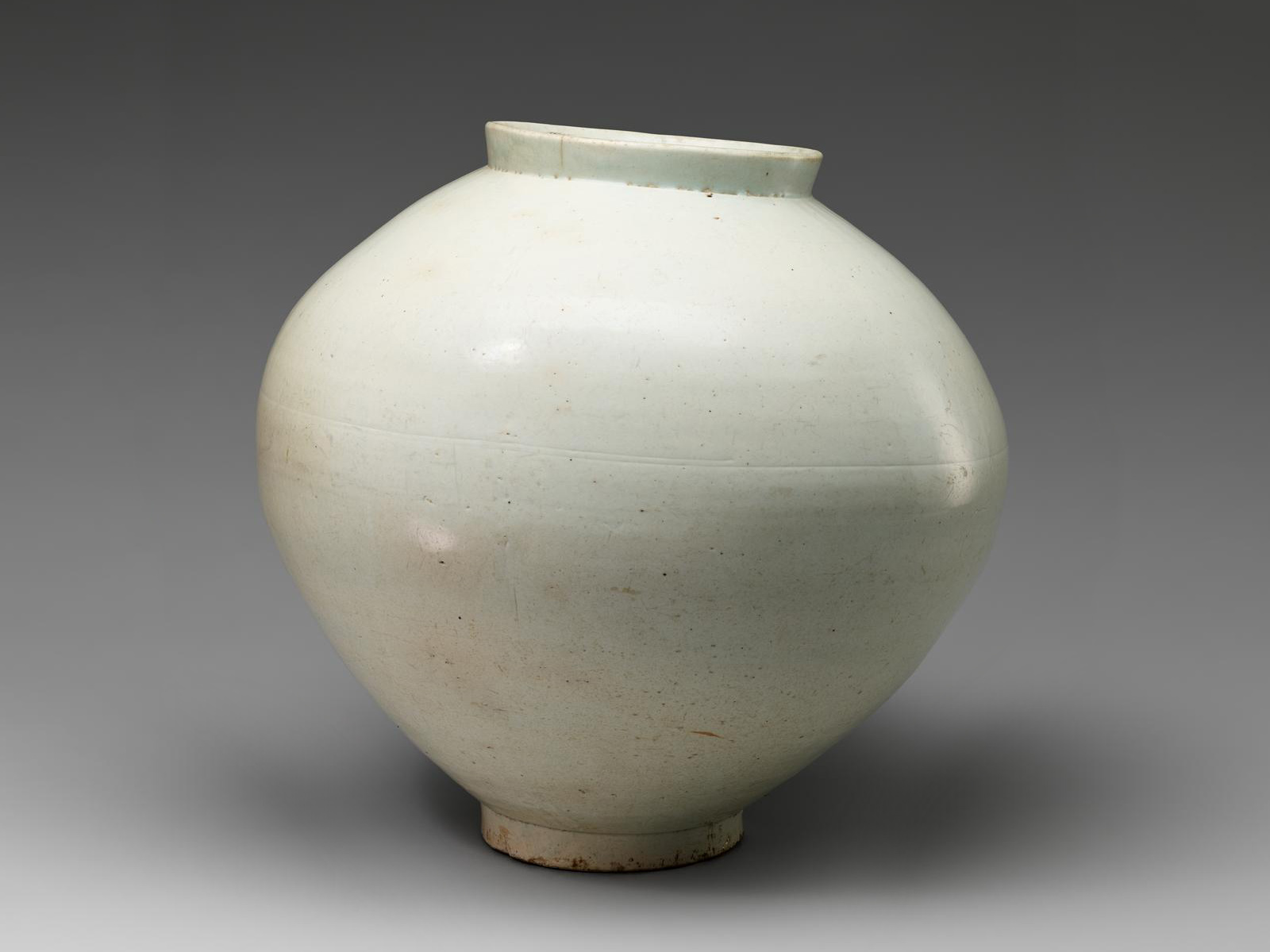The museum remains closed today due to power outage. Watch this space for updates.
The museum remains closed today due to power outage. Watch this space for updates.
The elegant form of this 350-year-old unadorned Korean moon jar continues to fascinate artists and art lovers alike.

Moon jar
Approx. 1650–1750
Korea
Joseon dynasty (1392–1910)
Porcelain with clear glaze
The Avery Brundage Collection, B60P110+
Round but not always the same shape, white but not always the same color, moon jars have fascinated connoisseurs and artists since the 17th century. Embodying the aesthetics of simplicity and elegance, Joseon-dynasty moon jars — produced for less than 200 years — have often been associated with an indigenous Korean identity. This moon jar is celebrated for its unique form, wider and rounder than other jars.

Moon jars were produced for fewer than 200 years, from the late 17th century until the early 19th century. They found favor among scholars and collectors during the Joseon dynasty (1392–1910). For them, moon jars embodied the aesthetics of simplicity and elegance sanctioned by Confucianism, the state ideology of the time. The specific functions of the jars have not been clearly identified, but they could have stored liquids or grains. Some may have been used as objects of aesthetic appreciation or as flower vases.
Due to its size, a moon jar cannot be made in one piece on a potter’s wheel. The clay cannot sustain the height and width of the jar, so the upper and lower halves of its body are separately shaped and then joined together at the middle, leaving a seam. As a result, no two moon jars are exactly alike or perfectly spherical. Some have blueish-white surfaces, while others are translucent white. The variations and colors among moon jars have fascinated and inspired many contemporary artists.
Whanki Kim — a prominent 20-century Korean artist, connoisseur, and collector — discovered the essence of Korean aesthetics in a white porcelain work, which he endearingly called a “moon jar.” He found beauty in its simple, imperfect, and irregular round form. As noted in Kim’s poem, moon jars share the same shape and white color, but each jar has its own characteristics:
I have not seen any defect in our jars.
They are round but not always the same shape.
Their white colors are not always the same white.
From their simple round form and pure white color,
the mysterious, complicated, and delicate beauty of the aesthetic emerges.
From “Jar,” 1963, by Whanki Kim (1913–1974)
Scholars and artists today see something new in the simple form, undecorated surface, and white color of moon jars, from which they draw artistic inspiration. The jars have been reinterpreted not only in contemporary ceramics, but also in paintings, sculptures, photographs, installations, and even video art.
White porcelain (Korean: baekja) usually refers to glazed and white-colored ceramic. The body is made from refined kaolin (a soft, white clay), then glazed and fired in a kiln at around 1300°C (2370°F). The kaolin, which contains less iron compared to the clay used in celadon, makes this white color possible, but requires firing at a higher temperature. Joseon porcelain, unlike its Chinese and Japanese counterparts at the time, does not display multiple colors or embellished patterns. It is instead characterized by its pure white color or minimal decoration with one pigment color.
As moon jars were produced for fewer than 200 years, there are only about 30 extant works from the Joseon dynasty in the world. They are highly valued as objects that represent Korean aesthetics and can be found in museum collections around the world. This moon jar, which shows a great sense of balance with its big size and esoteric hues, is one of the museum’s most prestigious objects and one of the most important moon jars in the world.